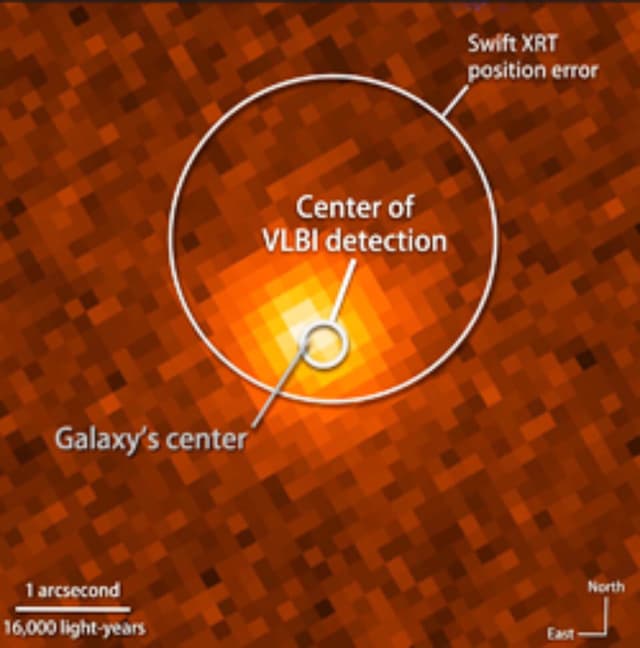Astronomers Capture Cosmic Jet Firing Up

(Originally published by the Kavli Institute for Particle Astrophysics and Cosmology)
September 1, 2011
The most spectacular high energy phenomena in the Universe are the enormous jets of particles and radiation resulting from matter falling onto black holes, where matter reaches energies far beyond what can be obtained in laboratories. We see them in our galaxy when stellar mass black holes have companion stars orbiting, and, more dramatically, in distant active galaxies where the black hole is a supermassive one in the center of the galaxy with more than a million or even a billion times the mass of our Sun.
The jets send matter and radiation shooting in opposite directions away from the black hole, and shine all over the electromagnetic spectrum. Such active galaxies (AGN) have been seen across the Universe, and since every galaxy including our own has a supermassive black hole, it is thought that galaxies may turn on from an inactive to an active phase, and even turn off. However, given that active and inactive phases last millions of years or longer, such transitions are not easy to observe live as they happen.

Recently though, on March 28, the Swift X-ray satellite's Burst Alert Telescope, which searches for the short X-ray flare-ups typical of the mega explosions known as gamma-ray bursts, saw a big flare-up but without a following flare-down. An observation with radio telescope arrays then showed a new radio source in the same position, and optical observations revealed the position to be in a distant galaxy. These observations, combined with others from infrared telescopes and Swift's ultraviolet instrument, suggested the new source of all this light was a relativistic jet. Astronomers concluded that they were witnessing birth of a new jet as a result of the supermassive black hole tearing apart a massive star that wandered too close, turning it into an accretion disk of infalling matter onto the black hole.
The multi-institutional team of astronomers analyzing and reporting the multiwavelength data featured KIPAC scientist Nicola Omodei, and was led by David Burrows of Penn State University and Bevin Zaudere of the Harvard-Smithsonian Center for Astrophysics. Omodei contributed data from the Fermi Gamma-ray Space Telescope's Large Area Telescope, which was built at and is run from SLAC. The Fermi-LAT's upper limit on gamma-ray emission from the source was an important input for constraining properties the newly seen jet, such as the speed to which particles are accelerated. Observations of this unique new jet, which may be igniting before our eyes, will be important as scientists work to more deeply understand the highest energy physics in the Universe.
Links to Nature: News and Views: Letters (subscription required)